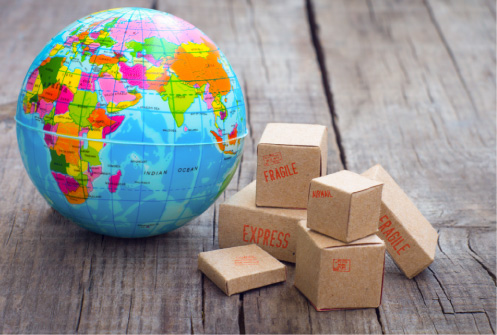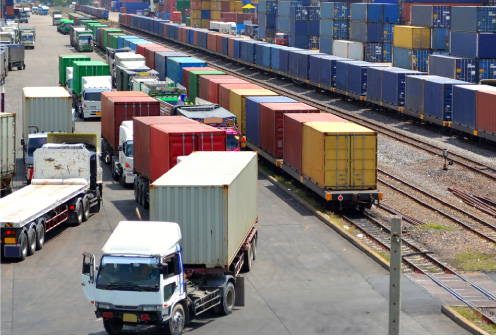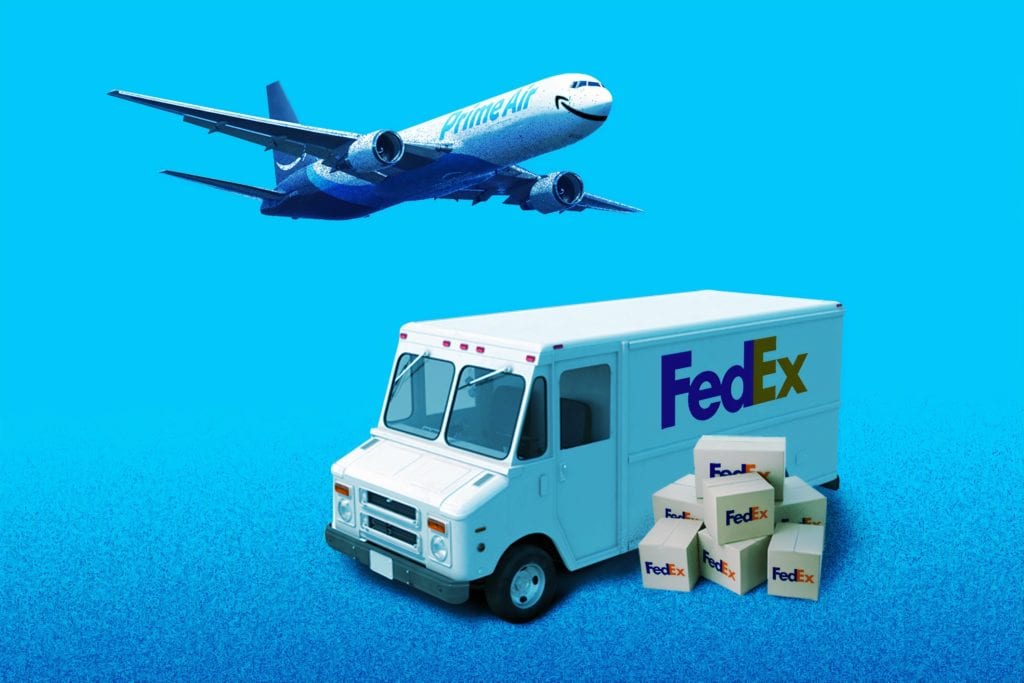Home » Learning Center
Resources on customs brokers and
the world of importing and exporting
goods in and out of Canada.
Learn about customs brokers
What is a customs broker and how can
they help me?
A customs broker is a licensed individual or company that works closely with border agents in other countries to make sure that goods being imported or exported have met all requirements. A good customs broker will help you with the paperwork and administration and will be available to answer questions on your behalf.
Understanding the difference between a registered importer and a customs broker.
Let’s take as an example importing a vehicle. A customs broker assists with the customs clearance of the vehicle into the United States that already meet US regulations for EPA (Environmental Protection Agency) and DOT (Department of Transportation). A Registered Importer assists with bringing the vehicle up to US regulations in order for the vehicle to be admissible into the United States. Once the vehicle meets US regulations, a broker can assist with the import.
Why do I need a customs broker?
Customs brokers help simplify the process of moving products over the border. While you don’t legally need a customs broker, there are many products that are difficult to get over the border without the help of one. By using a customs broker you can get your stuff over the border faster and with less hassle.
https://www.linkedin.com/pulse/how-choose-customs-broker-your-business-neil-johnson/
Learn about importing
Before importing, do your homework. Here’s how to determine whether your goods can be imported into Canada:
Identify the country of origin and the manufacturer of the item you plan to export or import. Canada has a range of goods over which it imposes import controls. The Import Control List (ICL) of the Export and Import Permits Act lists these goods.
Is your business registered for import/export?
Do you have an import/export license? Be sure to complete the registration and licensing requirements with municipal, provincial and federal government agencies
Register Your Business For Import Or Export
Before you can import into Canada, you must obtain an import/export account (commonly referred to as an import/export license). To do that you must complete several registration and licensing requirements with municipal, provincial and federal governments early in the process.
Canada Revenue Agency’s Business Registration Online is your destination for all federal business registration requirements.
Call 1-800-959-5525; or
Visit Business Registration Online
What is a Business Number (BN)?
Your BN is a simple method of identifying you and your business to the Government.
Every business has its own unique BN.
Check out the Cross Border Institute for further details.
https://www.cbinstitute.ca/e-guides/importing/business-numbers/
What can you import to Canada?
Visit this link to find out more about restricted or limited goods
https://www.cbsa-asfc.gc.ca/travel-voyage/rpg-mrp-eng.html
Things we help import:
- Cars (more about that here)
- Horses
- Items for tradeshows (called temporary imports)
- Machinery
- Plants
- Online orders
- Planes
Things we don’t import:
- New vehicles under 25 years old going to the US – here is a great article that explains why (call us and we will get you the right person)
- Products going to the US under $800 – You don’t need a broker!
- Tobacco
- Alcohol
- Firearms
- Marijuana
What is customs clearance?
“Customs clearance” or “clearing customs” is a phrase we hear a lot in our business. What it really means is the item that’s being imported or exported has met a country’s requirements for entering or leaving its borders. Those requirements vary from country to country and from one item to another.
We can help you “clear customs” fast, with less paperwork and fewer headaches.
What is an NRI?
A non-resident importer (NRI) is a company not located in Canada that imports into Canada from the United States and clears the goods into Canada under its own company name. The Canada Border Services Agency (CBSA) developed the nonresident importer concept specifically to help U.S. exporters gain access to Canadian markets. In essence, a non-resident importer is both the exporter from the United States and the importer of record into Canada. You become the importer of record even though you are not physically located in Canada. At BorderBuddy we guarantee that becoming an NRI is just like doing business without borders.
Become a Non-Resident Importer
What is a Non-Resident Importer?
A Non-Resident Importer (NRI) is a business based outside of Canada that does not have a physical presence in Canada, but imports goods into Canada as the Importer of Record.
The Non-Resident Importer (NRI) Program is an initiative of the Canada Border Services Agency (CBSA) that allows United States / international exporters to sell products to Canadian customers directly on a delivered-price basis, without the need for a physical presence in Canada.
Registering as an NRI offers many benefits, including more control over your supply chain, an increased presence in the competitive Canadian marketplace, and the opportunity to provide better service to Canadian customers.
How to Register as a NRI
We can help!
Normally, it can take 3-4 weeks to become registered as an NRI. At BorderBuddy, we can reduce that time to within 24 hours of submitting your paperwork. We will make sure this is done quickly and properly, and we can guide you through any questions you may have about importing to Canada. You would be fully licensed and ready to start shipping in 48 hours – that is the beauty of using BorderBuddy! Simply fill out our contact form, and an NRI specialist will reach out to you shortly.
Visit the Canada Border Services Agency (CBSA) for more information on the NRI program.
Learn more about cross border shopping
Canada Cross Border Shopping
Canadians love to hit the boutiques, department stores, and premiere outlets in the US. When returning to Canada with goods purchased in the US, you may qualify for a personal exemption. This allows you to bring goods of a certain value into the country without paying regular duty and taxes. There are exceptions for a minimum duty that may apply to some tobacco products.
Helpful Phone Numbers
Canadian Travelers Line 1 800 461 9999
External CRA: 1 800 959 5525
Canadian Food Inspection Agency (CFIA) 1 800 442 2342
Health Canada 1 866 662 0666
Foreign Affairs and International Trade Canada 1 877 808 8838
U.S. Customs & Border Protection – National – (877) 227-5511
U.S. Customs & Border Protection (Blaine ) – 360-332-5707
Learn about exporting
Exporting to the United States – Clearing U.S. customs:
You should ensure with your carrier that the importer of record will be notified of your shipment as soon as it arrives at U.S. Customs. The importer of record is responsible for filing all entry documents with the authorities at the port of entry. When exporting from Canada to the U.S., the importer of record can be the exporter (you), your consignee/buyer, or your U.S. customs broker.
If you want to defer payment of duties and processing fees until you have completed the sale of your goods, you can have them sent to a bonded warehouse. Duties and fees are not levied until the goods leave the warehouse.
After the goods have arrived at the port of entry, they will be examined by U.S. Customs officials to determine:
- the value of the goods for customs and duty purposes;
- the validity of the marking and labeling;
- the validity of the invoice;
- whether the shipment contains any prohibited goods; and
- whether the requirements of other U.S. federal agencies, such as the Department of Agriculture, have been met.
Once customs officials have decided that the shipment and its documentation are in order, the goods are allowed to proceed into the U.S. The broker then determines the duties or fees payable and files this information, along with any payment due, with U.S. Customs. After official appraisal of the goods, the entry is “liquidated,” meaning that the final computation of duties and/or drawback is complete.
For more information, see the government site:
https://www.tradecommissioner.gc.ca/tcs-sdc/guides/us-export_eu/141461.aspx?lang=eng#cle105
Here is a link to see a checklist for exporting commercial goods from Canada:
https://www.cbsa-asfc.gc.ca/export/checklist-controle-eng.html
Packing List
The packing list outlines key information about your shipment such as:
- Contents
- Weight
- Total number of packages
As your goods will be handled by different logistics and transportation providers, the packing list functions as a verification tool to make sure all goods are accounted for and reach their final destination.
The packing list may also be used to verify information about the shipment against other documents, such as a commercial invoice, to make sure all information is accurate and consistent.
This safety measure may help avoid errors at customs.
Learn about taxes and codes
What is GST?
GST is a fixed federal tax of 5% which applies to the supply of almost all goods and services in Canada. This 5% tax is payable at the border on commercial and personal imports. GST is the only tax charged to residents of Alberta, Northwest Territories, Nunavut and the Yukon Territories but is built into the HST for other provinces (see “What is HST?” below).
What is PST?
PST, or provincial sales tax, is a tax collected at the provincial level that varies in rate by province. Only four provinces currently collect this tax: Manitoba, British Columbia, Quebec and Saskatchewan collect PST (in addition to GST). This means that consumer purchases from residents in these provinces will be charged GST and PST. PST is not payable at the border for commercial imports to Canada.
What is HST?
HST, or harmonized sales tax, is a tax on imports or exports that is used in Canadian provinces where both the federal GST and the regional PST have been combined into a single value added sales tax. Five provinces currently collect this tax: New Brunswick, Newfoundland and Labrador, Nova Scotia, Ontario, and Prince Edward Island.
What is a tariff code?
A Harmonized Tariff Code or HS Tariff Code is a list of all the classification codes for goods that are being imported or exported. There are over 17,000 unique classification codes and each country has its own tariff schedule.
An explanation of HS codes and how to look them up:
The Harmonized System is an international naming structure for the classification of products. It allows participating countries to classify traded goods on a common basis for customs purposes. At the international level, the Harmonized System (HS) for classifying goods is a six-digit code system.
You can look up an HS code for shipments into Canada on the Canada Border Services Agency’s webpage for Customs Tariff.
For shipments into the United States, you can use this list of the Harmonized Tariff Schedule to look up an HS code.
For a comprehensive review of documentation necessary see the Cross-Border Institute.
Learn more about Customs
How do I release a seized item in customs?
This will depend on why the item was seized. If it was seized because the item is restricted/inadmissible, customs will either send the product back to the exporter or destroy it. If the item has been stopped by customs and they are waiting on the importer to provide additional information/pay customs duties and taxes on the product, a third party brokerage firm can assist and complete a formal entry with customs to have the goods released.
Check out our latest blog post on what to do if customs has seized your goods.
Check out CBSA’s Customs Tariff Guide
Learn more about US to Canada shipping
How to Ship from USA to Canada
Calculating shipping from the U.S. to Canada is a straightforward process. The amount of postage you must pay depends upon the weight of your package, the desired speed of delivery, and the origination and destination points of the package. The shape and dimensions of your package may also play a role.
These are some cross border solutions from Canada Post, USPS, FedEx, and UPS.
Start Importing!
Ready for some help getting your shipment across the border?
You’re just a click away from getting started!

Jay Mohl, Sales & Marketing, Parksville Boathouse Parksville B.C.

Amanda Burr at BorderBuddy made our shipment seamless and her customer service was outstanding. Without question, we will work with Amanda and BorderBuddy again in the future. Thanks Amanda!

Don Mariutto

“I used BorderBuddy when were in a jam with a small tile shipment to Canada — just called them randomly after a Google search. Blair handled our case, and was in constant communication with updates, and got our shipment released within 24 hours, even though we were starting the process from scratch. Based on this experience, I can’t recommend Blair and the BorderBuddy team highly enough. Even though this was just a small shipment, they handled it like it was the most important on their agenda. We will definitely work with them again in the future – hopefully though, not on an emergency basis! THANK YOU!!”

Nathan Bird

company is always so very helpful in getting things across the border without any headaches. Tara was our agent this time around and she was prompt in answering any questions, super polite over the phone and coordinated everything for us. Highly recommend using their services.










